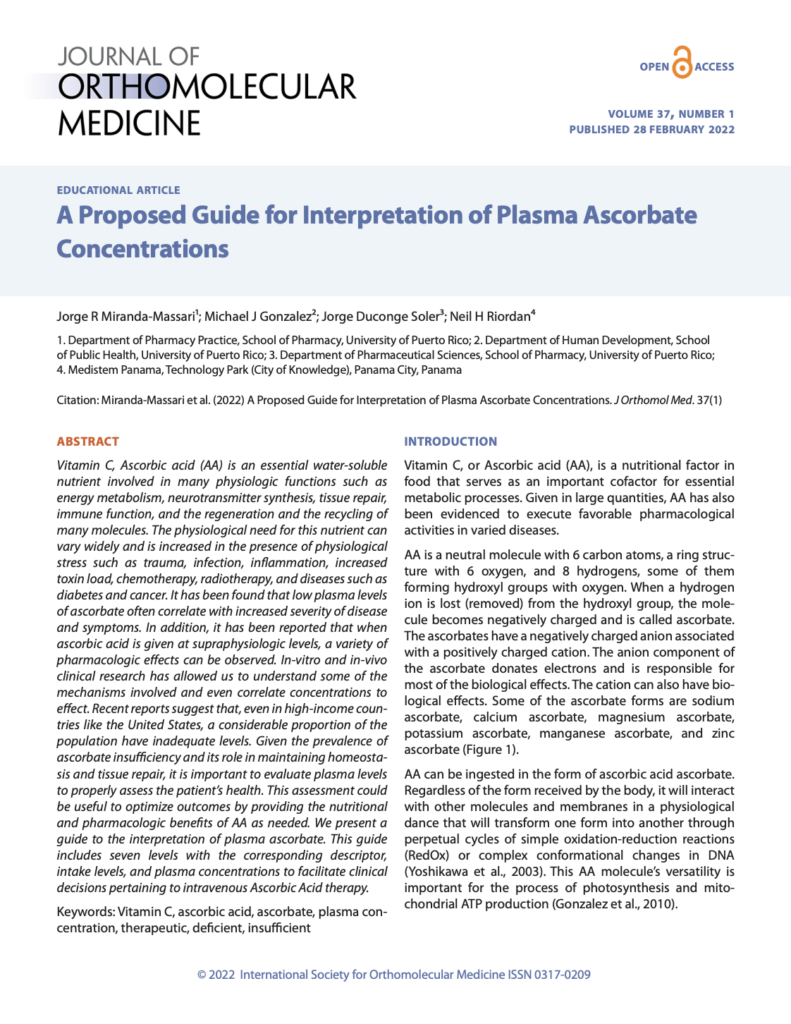July 1905
A Proposed Guide for Interpretation of Plasma Ascorbate Concentrations.
Journal Citation
Journal of Orthomolecular Medicine 37 (1); 2022
Authors
JR Miranda-Massari, MJ Gonzalez, JD Soler, NH Riordan.
Abstract
Vitamin C, Ascorbic acid (AA) is an essential water-soluble nutrient involved in many physiologic functions such as energy metabolism, neurotransmitter synthesis, tissue repair, immune function, and the regeneration and the recycling of many molecules. The physiological need for this nutrient can vary widely and is increased in the presence of physiological stress such as trauma, infection, inflammation, increased toxin load, chemotherapy, radiotherapy, and diseases such as diabetes and cancer. It has been found that low plasma levels of ascorbate often correlate with increased severity of disease and symptoms. In addition, it has been reported that when ascorbic acid is given at supraphysiologic levels, a variety of pharmacologic effects can be observed. In-vitro and in-vivo clinical research has allowed us to understand some of the mechanisms involved and even correlate concentrations to effect. Recent reports suggest that, even in high-income coun‐ tries like the United States, a considerable proportion of the population have inadequate levels. Given the prevalence of ascorbate insufficiency and its role in maintaining homeosta‐ sis and tissue repair, it is important to evaluate plasma levels to properly assess the patient’s health. This assessment could be useful to optimize outcomes by providing the nutritional and pharmacologic benefits of AA as needed. We present a guide to the interpretation of plasma ascorbate. This guide includes seven levels with the corresponding descriptor, intake levels, and plasma concentrations to facilitate clinical decisions pertaining to intravenous Ascorbic Acid therapy.

